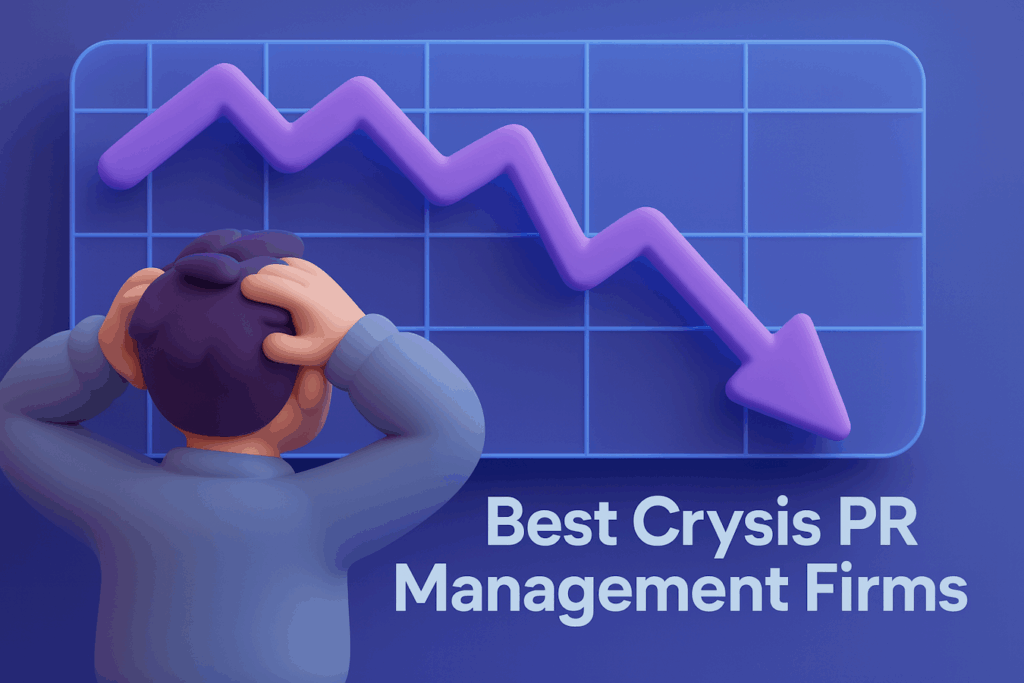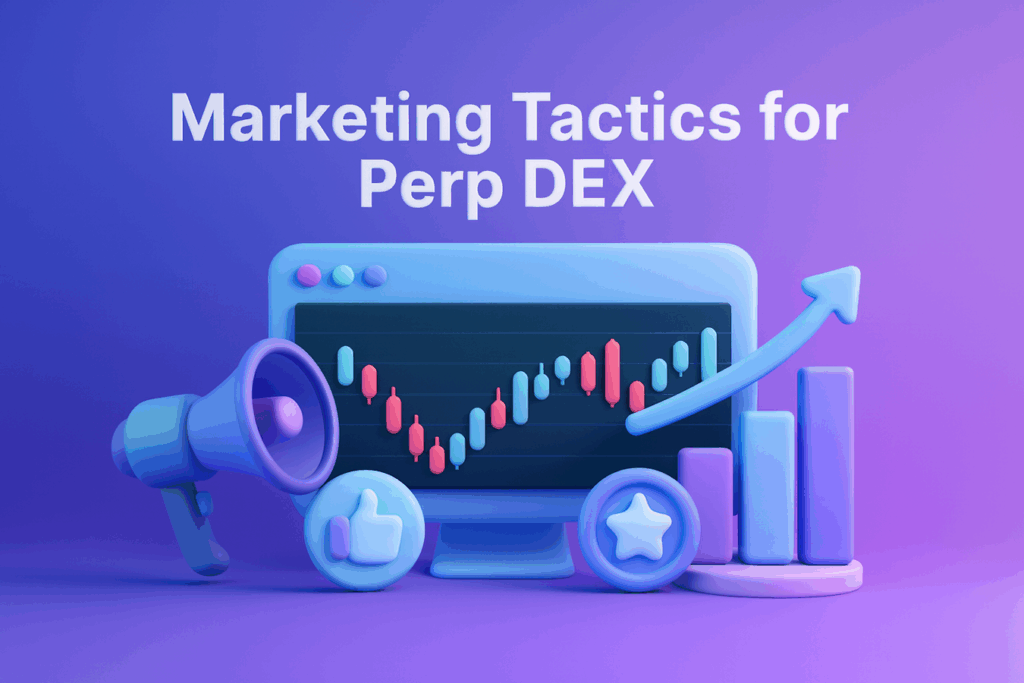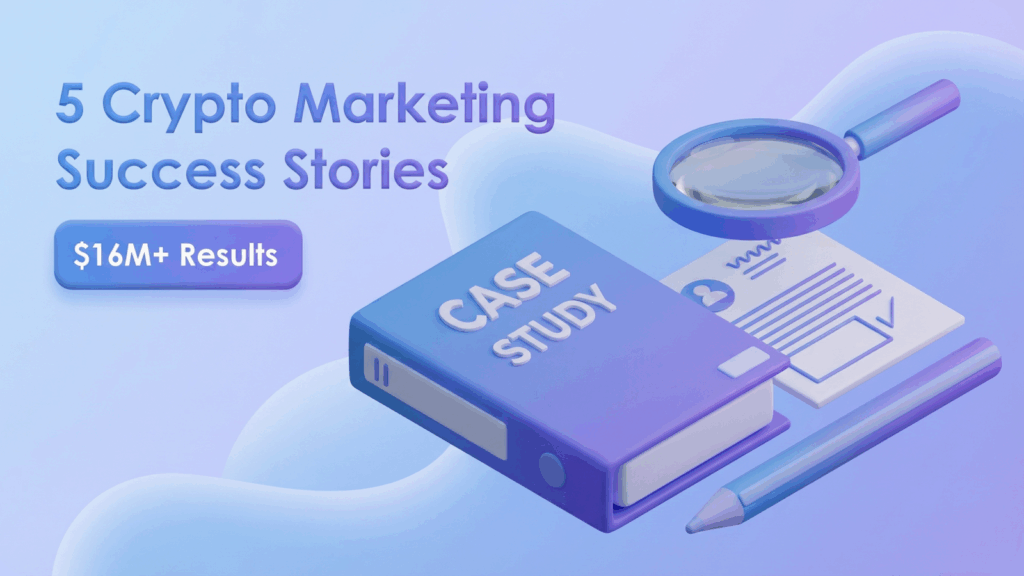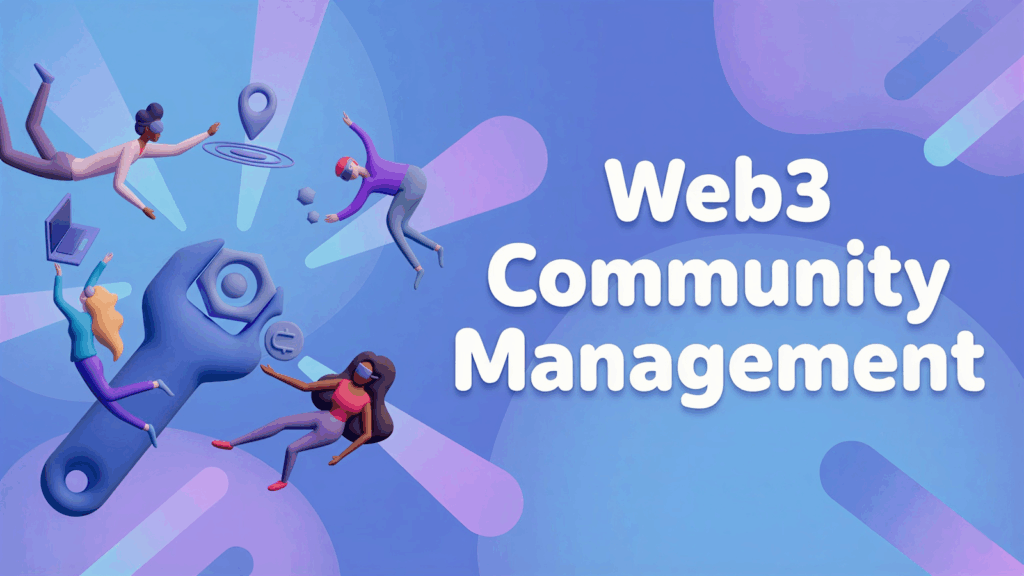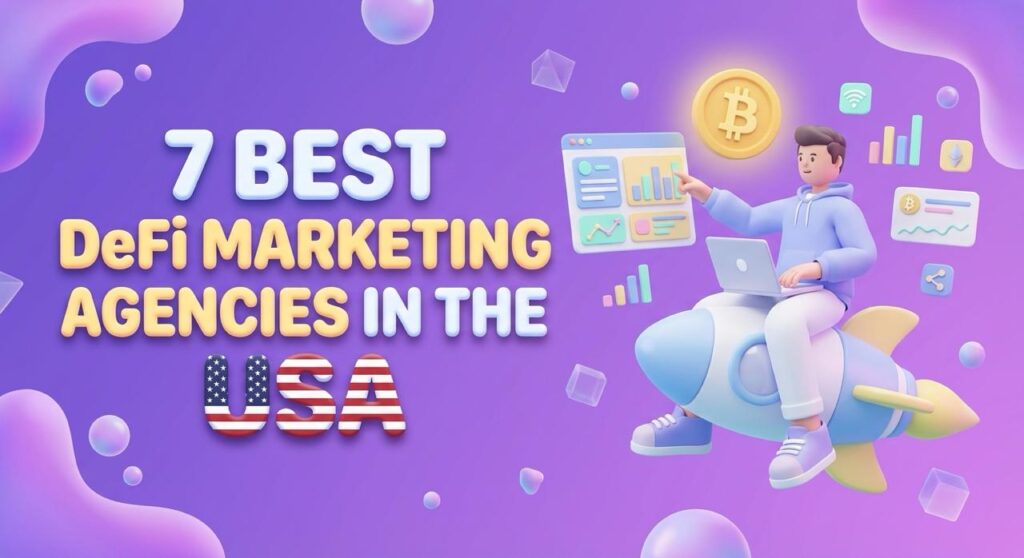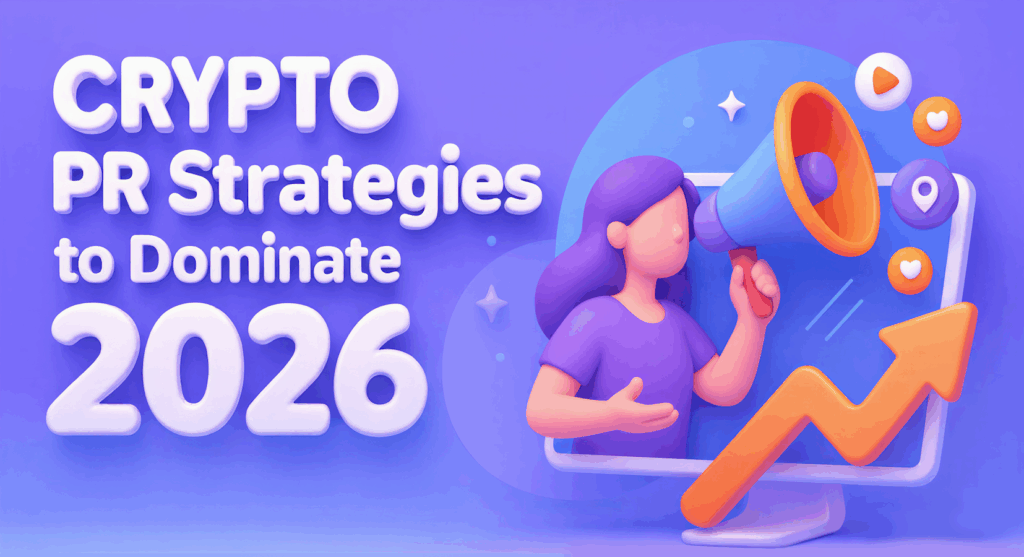Why Traditional SEO Isn’t Enough Anymore
Here’s a stat that should wake you up: 46% of all online queries now happen through AI assistants like ChatGPT, Claude, and Perplexity—not Google.
Yet 93% of brands are still optimizing exclusively for traditional search.
While your competitors scramble to rank on Page 1 of Google, the real battle has shifted. Users aren’t typing “best crypto wallet 2025” into a search bar anymore. They’re asking Claude: “Which crypto wallet should I use for DeFi, and why?” And if your brand isn’t part of that conversation, you’re invisible.
It’s about recognizing that AI-powered recommendations are now the primary way your ideal customers discover brands—especially in fast-moving sectors like Web3, B2B SaaS, and E-commerce.
The companies winning right now? They’ve cracked the code on what we call AI Visibility: the art and science of ensuring your brand appears in AI-generated responses across ChatGPT, Claude, Perplexity, SearchGPT, and Google’s AI Overviews.
This guide breaks down everything you need to know about AI Visibility. You’ll understand what it is, why it matters, how it works, and most importantly—how to start capturing this channel before your market gets crowded.
What Is AI Visibility?
AI Visibility is your brand’s ability to be discovered, understood, and recommended by artificial intelligence systems.

Think about how search engines work: you optimize content for keywords, build backlinks, and compete for rankings. AI Visibility is different. It’s about making your brand comprehensible and trustworthy to AI models that generate answers, not just links.
When someone asks ChatGPT “What’s the best project management tool for remote teams?”, the AI doesn’t show ten blue links. It analyzes its training data, evaluates current information, and recommends specific tools with reasoning. If your product isn’t in that answer, you don’t exist to that user.
The numbers tell the story: Over 200 million people use ChatGPT weekly. Perplexity handles more searches than many traditional search engines. Microsoft’s Bing Chat is integrated into Windows. Google’s Gemini is everywhere. These aren’t experiments anymore—they’re how people find information.
AI Visibility differs from traditional SEO in fundamental ways. Search engines index pages and match keywords. AI systems understand context, synthesize information from multiple sources, and generate original responses. They don’t just find your content—they interpret it, evaluate it, and decide whether it’s worth mentioning.
Here’s a real scenario: A crypto founder searches Google for “best blockchain marketing agencies.” They click through ten websites, read case studies, compare prices. It takes two hours.
The same founder asks ChatGPT:
“Which marketing agency specializes in crypto projects and understands Web3?”
The AI instantly provides three recommendations with specific reasons why each fits. Decision made in five minutes. If your agency is in that AI-generated shortlist, you just skipped the entire consideration funnel. If you’re not, you don’t exist in that founder’s universe—regardless of your Google ranking.
This shift is accelerating. Younger users particularly trust AI recommendations because they feel personalized and unbiased. They’re not clicking sponsored results or scrolling past ads. They’re getting what feels like advice from a knowledgeable friend.
AI Visibility isn’t about gaming algorithms. It’s about genuinely positioning your brand so AI systems recognize your expertise, understand your value proposition, and feel confident recommending you to users.
Why AI Visibility Is a Game-Changer for Business
The implications of AI Visibility go far beyond another traffic source. This is about fundamentally changing how customers discover and evaluate you.
| Benefit | What It Means | Why It Matters |
|---|---|---|
| Massive New Organic Channel | AI search engines (Perplexity, SearchGPT, Bing Chat, Google AI Overviews) process millions of queries daily with exponential growth | Users are making AI search their default for research—faster and more accurate than traditional search. High-intent users comparing solutions, not just browsing. AI recommendations come with implicit trust. |
| Direct Influence on Buying Decisions | AI recommendations act as third-party endorsements from trusted sources | Users treat AI assistants as advisors. When AI explains why your product fits their needs, it pre-sells for you at the perfect moment in their journey—worth more than top Google rankings. |
| Compounding Early-Mover Advantage | Minimal competition right now; most brands unaware AI Visibility exists | Authority built today compounds over time. AI systems learn patterns—early optimization creates lasting positioning before markets become saturated. |
AI systems learn patterns. If your brand consistently appears in their training data and retrieval processes as an authority, that association strengthens. You’re not just winning today’s queries—you’re training future AI models to recognize you.
The niche-specific benefits are enormous:
- For crypto projects, AI Visibility solves a critical problem: trust. Cryptocurrency users are paranoid (rightfully so). When AI assistants mention your project in contexts about security, innovation, or reliability, you’re building trust at scale. AI becomes your credibility layer.
Crypto founders searching for “legitimate DeFi protocols” or “audited smart contract platforms” will see AI-generated lists. Being on those lists—with AI explaining why you’re trustworthy—is marketing gold. It bypasses the skepticism that plagues crypto advertising.
- For B2B companies, AI Visibility means appearing in AI-generated buyer guides. Enterprise decision-makers use AI to research vendors, compare solutions, and build shortlists. If AI systems understand your product’s unique value and recommend you for specific use cases, you’re effectively getting free placement in personalized RFP responses.
Imagine a CTO asking: “What CRM handles complex B2B sales cycles with deep Salesforce integration?” If your product is in that answer with clear differentiation, you’ve just earned a qualified lead without any ad spend.
- For e-commerce brands, AI shopping assistants are reshaping product discovery. Users ask things like: “Best noise-canceling headphones under $300 for frequent travelers.” AI evaluates specifications, reviews, and value propositions to recommend specific products.
If your products aren’t optimized for AI understanding—if AI can’t parse your specifications, understand your differentiation, or access reliable information about you—you’re invisible in this new shopping journey.
How AI Visibility Works: Key Factors
AI Visibility isn’t magic. It’s the result of specific factors that influence how AI systems perceive, evaluate, and recommend your brand. Master these, and you control your AI presence.
Content That AI Understands
AI systems excel at processing structured, clear information. Unlike humans who can infer context from messy content, AI needs clarity to extract accurate meaning.

Structure is everything. AI models parse content looking for patterns: clear headings, logical organization, explicit relationships between concepts. When your content follows predictable structures—definitions, lists, step-by-step explanations—AI can extract and utilize it confidently.
Think about FAQ sections. They’re gold for AI Visibility because they map directly to how users ask questions. When someone asks an AI assistant a question, the AI searches its knowledge for matching question-answer pairs. Well-structured FAQs make you the obvious source to cite.
Authoritativeness and expertise matter intensely. E-E-A-T principles (Experience, Expertise, Authoritativeness, Trustworthiness) that Google promoted for years are even more critical for AI. LLMs are trained to evaluate source credibility. They look for signals: author credentials, citation of data sources, depth of explanation, technical accuracy.
Content that demonstrates genuine expertise through specificity and nuance ranks higher in AI’s internal evaluation. Surface-level blog posts get ignored. Deep, comprehensive resources get cited. AI can distinguish between marketing fluff and substantive information.
Freshness and relevance are crucial. AI systems—especially those with real-time web access like Perplexity—prioritize recent information. Stale content from 2020 gets deprioritized. Regularly updated resources signal relevance and reliability.
This doesn’t mean rewriting everything monthly. It means ensuring your key content stays current: updating statistics, adding recent developments, refreshing examples. AI notices publication dates and update timestamps. Show you’re actively maintaining authoritative resources.
Data-driven content performs exceptionally well. Specific numbers, research citations, comparative analysis—these give AI concrete information to work with. Vague claims like “industry-leading” mean nothing. Specific metrics like “processes 50,000 transactions per second with 99.99% uptime” give AI quotable facts.
Technical Optimization
The technical layer determines whether AI systems can even access and understand your content effectively.
Structured data and Schema markup are fundamental. These provide explicit signals about what your content represents. Schema tells AI: “This is a product page, here’s the price, these are the specs, these are reviews.” Without it, AI must infer everything from unstructured HTML.
Implementing Schema markup for your content types—products, articles, FAQs, organizations, events—makes you dramatically more legible to AI. It’s like adding labels to a filing system. AI can quickly extract exactly what it needs.
Different Schema types matter for different goals. Product schema helps e-commerce visibility. Article schema aids content discovery. FAQ schema directly maps to question-answering. Organization schema establishes your entity’s identity. Layer them strategically.
Content API accessibility is critical. Many AI systems don’t just crawl static HTML—they look for structured data sources. APIs that provide clean, structured content make you preferable for AI to reference. If AI can programmatically access your product catalog, documentation, or knowledge base, you’re making their job easier.
This doesn’t require building complex APIs from scratch. Simple measures help: ensure your robots.txt doesn’t block AI crawlers, provide XML sitemaps, make content accessible without JavaScript rendering (AI crawlers often don’t execute JS).
Consider that AI training processes favor accessible, well-structured content. If your site requires complex navigation or authentication to reach key information, you’re invisible during training phases. Public, crawlable, structured content is what gets into AI knowledge.
Semantic markup enhances understanding. Beyond Schema, semantic HTML matters. Proper heading hierarchies (H1, H2, H3), meaningful link text, descriptive alt tags on images—these help AI understand relationships and context.
When you use headings semantically, AI can understand your content structure: this is the main topic, these are subtopics, these are supporting details. That structure maps to how AI organizes knowledge internally.
Reputation and Mentions
AI systems don’t just evaluate your content in isolation—they consider your broader digital reputation.
Quality backlinks and citations build AI trust. When authoritative sites link to you, it signals credibility. But for AI, the context matters more than for traditional SEO. Links with descriptive anchor text and surrounding context that explains why you’re relevant carry more weight.
Think about how AI processes backlinks differently. Google’s algorithm counts links as votes. AI systems read the context around links to understand the relationship. A link that says “According to [YourBrand]’s comprehensive analysis…” teaches AI that you’re an authoritative source for analysis.
Presence in authoritative sources is critical. AI models are trained on data that skews toward high-quality sources: news publications, academic papers, industry reports, government sites. Being mentioned in these contexts dramatically increases your authority in AI’s evaluation.
This is why earned media matters enormously for AI Visibility. A feature in TechCrunch, a mention in an industry analyst report, coverage in trade publications—these embed you in the authoritative content that trains AI models.
For B2B and crypto especially, presence in industry-specific authoritative sources is gold. Being cited in Gartner reports, mentioned in CoinDesk articles, or featured in industry whitepapers makes AI associate you with category leadership.
Social signals and professional community presence amplify visibility. While social media’s direct impact on search rankings is debated, for AI Visibility it’s clearer: social proof matters. AI systems increasingly incorporate signals from professional networks, Reddit discussions, GitHub activity (for tech products), and community engagement.
Why? Because AI is learning to evaluate collective human judgment. If you’re consistently discussed in relevant professional communities, if developers star your GitHub repos, if industry experts mention you on LinkedIn—these patterns signal relevance and quality.
Optimization for AI Queries
Understanding how users interact with AI assistants unlocks a different optimization approach.
Conversational queries require different content strategies. People don’t type keywords into AI—they ask questions. Full sentences. Natural language. “What’s the best marketing agency for crypto projects that understands community building?” versus Googling “crypto marketing agency.”
This means your content must address questions, not just contain keywords. Think about user intent in question form. What would someone ask AI that should lead them to you? Build content that directly answers those questions.
Long-tail conversational queries are where you win. Broad queries like “marketing agency” are hyper-competitive. Specific queries like “marketing agency that specializes in DeFi protocols with experience in Discord community management” are addressable.
AI excels at matching specific, nuanced queries to specific, nuanced content. You can’t dominate “CRM” but you can own “CRM for consulting firms with project-based billing and client portal integration.” Build content addressing these specific, valuable queries.
Direct, comprehensive answers are essential. AI systems prefer content that clearly answers questions without making users hunt. If someone asks about your pricing and your pricing page requires clicking through three modals and filling a form, AI can’t help them.
Transparency wins. Clear explanations, explicit comparisons, honest about-trade-offs—this is what AI can confidently cite. Marketing copy that obfuscates or requires interpretation gets ignored.
Think about featured snippet optimization, then take it further. Not just answering one question, but anticipating related questions and answering those too. When you provide comprehensive information, AI learns to treat you as a reliable, thorough source.
Practical Steps: Where to Start
AI Visibility isn’t built overnight, but you can make meaningful progress systematically. Here’s your roadmap.

STEP 1: Audit Your Current AI Presence
Key Insight:
Measure your AI discoverability first by testing real customer queries across multiple AI systems, then optimize based on what you find.
Before optimizing, understand where you stand. Start by directly testing AI systems. Ask ChatGPT, Claude, and Perplexity questions that should surface your brand. Use queries your target customers would actually ask.
For example, if you’re a crypto project: “What are secure decentralized exchanges on Ethereum?” If you’re B2B SaaS: “Best alternatives to [competitor] for [specific use case].” If you’re e-commerce: “High-quality [product category] under [$price].”
See if you’re mentioned. If yes, what context? Is the information accurate? What sources does the AI cite? If you’re not mentioned, what competitors are? This reveals your visibility gaps.
Check across multiple AI systems—they have different training data and retrieval mechanisms. Being visible in ChatGPT but not Perplexity indicates different optimization needs.
Document everything: which queries return your brand, which don’t, what information AI provides about you, what misconceptions exist, who appears instead of you. This is your baseline.
STEP 2: Content Optimization
Key Insight:
AI optimization means building comprehensive, clearly structured, authoritative content that serves both human readers and machine parsing—think “definitive resource” not “keyword-stuffed page.
Transform your content to be AI-friendly. Start with your core pages: homepage, product/service pages, about page, key resources.
Create comprehensive FAQ sections addressing real customer questions. Not just two-sentence answers—substantial responses that provide genuine value. Organize them by category. Use clear question formatting in headings.
Develop definitive guides for your core topics. If you’re a marketing agency, create the comprehensive guide to your specialty. If you’re a SaaS company, build deep resources about the problems you solve. AI systems favor and cite comprehensive, authoritative resources.
Structure content with clear hierarchies. Use descriptive headings that work standalone. Each section should answer a specific question or explain a specific concept. Make your content scannable not just for humans but for AI parsing.
Add context and definitions. Don’t assume AI knows your industry jargon. When you first use a technical term, define it. This isn’t dumbing down—it’s ensuring accurate interpretation.
Update existing content with fresh data, recent examples, and current best practices. Add publication dates and “last updated” timestamps. Show active maintenance.
STEP 3: Technical Preparation
Key Insight:
AI optimization requires technical groundwork—structured data tells AI what your content is, semantic HTML shows how it’s organized, and crawlability ensures AI systems can access it in the first place.
Implement structured data across your site. Start with Schema.org markup for your content types. Use Google’s Structured Data Testing Tool to validate implementation.
For e-commerce: add Product, Offer, and Review schema. For content sites: Article, Organization, and FAQ schema. For service businesses: Service, LocalBusiness (if applicable), and Review schema.
Ensure your site is crawlable by AI systems. Check your robots.txt isn’t blocking legitimate AI crawlers. Some AI systems identify themselves in user agents—don’t block them indiscriminately.
Create XML sitemaps for all content types. Submit them not just to Google Search Console but ensure they’re discoverable at standard locations (/sitemap.xml).
Improve semantic HTML. Review your heading structure—one H1 per page, logical H2/H3 hierarchy. Use semantic tags (article, section, nav, aside) appropriately. Add meaningful alt text to images describing what they show and why they’re relevant.
If you have documentation, APIs, or knowledge bases, make them publicly accessible (or at least crawlable). Consider creating a dedicated section for AI-friendly resources: comprehensive FAQs, definitions, comparisons, technical specifications.
STEP 4: Building Authority
Key Insight:
Focus on earning mentions in the authoritative sources AI cites—trade publications, analyst reports, expert quotes, and authentic community engagement—rather than chasing backlinks for traditional SEO.
Develop a strategy for earning mentions in authoritative sources. This isn’t about link building for SEO—it’s about embedding your brand in the authoritative content AI systems trust.
Create expert content worth citing. Original research, industry surveys, comprehensive analyses, thought leadership that advances your field. Make it so good that others naturally reference it.
Contribute to industry publications. Write guest articles for respected trade publications in your space. Get quoted as an expert in news articles. Speak at industry events that generate coverage.
Build relationships with journalists and industry analysts in your sector. Make yourself available as an expert source. When they need quotes or insights, being top-of-mind gets you into articles that AI training incorporates.
For B2B especially, pursue inclusion in analyst reports and industry roundups. Gartner, Forrester, G2, industry-specific research firms—being mentioned in these authoritative sources dramatically boosts AI’s perception of your legitimacy.
Engage authentically in professional communities where your audience gathers. Reddit, industry-specific forums, LinkedIn groups, GitHub (for technical products). Don’t spam—provide genuine value. These discussions increasingly feed into AI training and retrieval.
STEP 5: Monitoring and Iteration
Key Insight:
Treat AI visibility like performance marketing—establish baseline metrics, monitor consistently, measure what’s working, and continuously optimize based on data. Track queries that surface you, contexts where you’re mentioned, and conversion patterns from AI-driven discovery.
Monthly, run the same set of test queries across different AI systems. Document which queries return your brand and in what context. Track changes over time. This is your primary visibility metric.
Use AI systems themselves for competitive intelligence. Ask them to compare you with competitors. What advantages do they attribute to each? This reveals how AI perceives your positioning.
Monitor brand mentions in AI-generated content. Use tools that track when your brand appears in AI responses. Some emerging SEO tools are adding AI visibility tracking features.
Collect feedback from customers about how they discovered you. You’ll start hearing “ChatGPT recommended you” or “I asked Perplexity about [use case] and found you.” Track these conversion sources.
Review your analytics for patterns. Traffic from chat.openai.com referrals, Perplexity visits, or direct traffic following AI recommendation patterns (immediate deep page visits without site navigation) indicates AI-driven discovery.
Iterate based on what works. If certain content types get cited more frequently, create more like them. If specific queries never surface you despite optimization, try different content approaches or terminology.
Stay current with AI system updates. New features in ChatGPT, Perplexity, SearchGPT, and others create new visibility opportunities. Early adoption of new AI platform features can provide temporary advantages.
Conclusion
AI Visibility isn’t a future trend you can delay addressing — it’s the present reality of how millions make decisions daily. While you read this, potential customers are asking AI assistants for recommendations in your category. The question isn’t whether this matters. It’s whether you’ll be in those recommendations.
The early-mover advantage here is substantial and time-sensitive. AI systems learn patterns and build trust over time. When you establish authority in their training data and retrieval processes now, you’re building compounding credibility. Every time AI successfully recommends you and users find value, that strengthens your position for future queries. This isn’t traffic that fluctuates—it’s reputation that compounds.
But this window won’t stay open indefinitely. Right now, most brands don’t even know AI Visibility exists as a discipline. They’re still focused exclusively on Google while their potential customers migrate to AI assistants. The strategies that work today when competition is minimal will require exponentially more investment as markets mature. Establishing your AI presence now is dramatically cheaper and faster than catching up when every competitor is fighting for the same AI mentions.
The challenge is that AI Visibility isn’t something you can DIY effectively. It sits at the intersection of multiple complex disciplines: AI technology understanding, content strategy, technical SEO, reputation building, and continuous platform monitoring. You need teams who actually test prompts across different AI systems daily, who understand how Claude differs from ChatGPT differs from Perplexity, who track which content structures get cited and which get ignored.
Agencies that still approach this like traditional SEO are missing the entire point—which is exactly why Best AI SEO agency developed dedicated AI Visibility capabilities. They combine deep AI technology expertise with strategic marketing execution. They’re not theorizing about how AI might work; they’re running systematic tests, tracking real AI recommendation patterns, and optimizing based on what actually gets brands cited by AI systems.
For crypto projects, B2B SaaS companies, and e-commerce brands looking to dominate their categories in the AI era, partnering with a specialized agency like ICODA means compressing months of costly experimentation into focused strategies that deliver measurable visibility. They understand the nuances—how to structure content for LLM comprehension, how to build the authoritative footprint that makes AI trust your brand, how to monitor and iterate as AI platforms evolve.
The brands that will dominate their categories in the AI-driven era are being built right now. ICODA is helping forward-thinking founders capture this opportunity while competition is still asleep. If you want your project recommended to millions of users by AI assistants, the time to build that foundation is today.
The game has changed. The winners will be those who recognized it first.
Frequently Asked Questions (FAQ)
AI Visibility is your brand’s ability to be discovered and recommended by AI assistants like ChatGPT, Claude, and Perplexity when users ask for product or service recommendations. It matters because over 45% of consumers now use AI search engines and conversational AI tools for research, creating a massive organic traffic channel that most businesses are completely missing.
Basic AI optimization like implementing Schema markup and structuring FAQ content can be handled in-house, but achieving dominant AI Visibility across ChatGPT, Claude, Perplexity, and emerging platforms requires specialized expertise in LLM behavior, semantic search patterns, and real-time testing. Agencies like ICODA that specialize in AI Visibility for crypto, B2B SaaS, and e-commerce brands bring systematic frameworks and platform-specific knowledge that typically deliver results 3-5x faster than internal trial-and-error approaches.
While traditional SEO optimizes for search engine rankings and click-through rates, AI Visibility optimization focuses on getting your brand cited and recommended within AI-generated answers and conversational search results. AI assistants don’t show ten blue links — they provide direct recommendations based on semantic understanding, authority signals, and structured data, making content quality and E-E-A-T principles more critical than keyword density
Most brands start seeing mentions in AI assistant responses within 4-8 weeks of implementing structured data, content optimization, and authority-building strategies. However, comprehensive AI Visibility—where your brand consistently appears in relevant AI recommendations across multiple platforms—typically develops over 3-6 months as AI systems index updated content and recognize established authority patterns.
Test your AI presence by asking ChatGPT, Claude, and Perplexity direct questions your target customers would ask, such as “best [product category] for [specific use case]” or “top agencies specializing in [your service].” Track whether your brand appears in responses, how accurately AI describes you, what context you’re mentioned in, and which competitors appear instead—this conversational search audit reveals your current AI Visibility baseline.
AI systems prioritize content authority and expertise (E-E-A-T signals), structured data and Schema markup for content understanding, presence in authoritative sources and quality backlinks, fresh and regularly updated information, clear answers to conversational queries, and semantic relevance to user intent. Unlike traditional search engine algorithms that weigh hundreds of ranking factors, LLM-based recommendations focus heavily on content comprehensiveness, source credibility, and how well your information directly answers natural language questions
Rate the article

